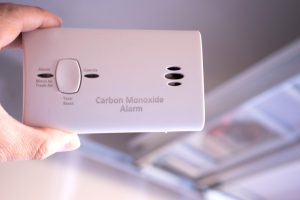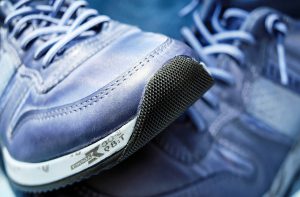There’s a lot to like about winter, unless you’re a dedicated sun worshipper, of course; we have to admit, though, we like to get our cozy on when the temperature drops. But now that the icy season is in full swing, it’s also important to recognize the dangers that winter can bring, especially for older adults. There are lots of risks to your health and safety that are lurking both indoors and out, but there are ways you can avoid them and focus on enjoying the winter (or waiting for the spring thaw)!
Stay Toasty When You Head Outside

We don’t want to sound like your mom, but, because it becomes increasingly difficult to regulate your body temperature as you age, it’s really important that you wrap up warm if you’re going to be heading outside. After all, according to the CDC, people over age 65 make up over half of all hypothermia deaths! Hypothermia occurs when your body temperature drops below 95 degrees Fahrenheit, and can result in serious health problems, like heart attack, kidney issues, and even death.
The best way to get yourself ready to brave the cold is to dress in loose layers (the air between the layers will help keep you warmer), which will allow you to shed excess clothing if you become too warm, and make sure that no skin is exposed to the cold. And, because hypothermia happens very gradually and so can be difficult to detect, you should know the symptoms:
- Shivering
- Slurred speech or mumbling
- Slow, shallow breathing
- Weak pulse
- Clumsiness or lack of coordination
- Drowsiness or very low energy
- Confusion or memory loss
- Loss of consciousness
Keep Your Home Warm
Following on the theme of staying nice and toasty, you should also make sure you’re heating your home properly when the winter chill sets in outside: try keeping your thermostat set to at least 68 degrees at all times. Yes, that can be pricey, so it can be tempting to skimp on the heating if you’re on a fixed income, but before you lower the thermostat, try doing some simple projects around the house (or getting someone to help you with them), like closing vents, putting plastic on windows, or placing rolled towels or blankets in front of doors to reduce drafts.
Keep Your Home Safe
When it comes to time spent at home, you’ve got to think about more than just staying warm during the winter: this season brings some indoor hazards that might not be as much of an issue in the warmer seasons. For example, the risk of carbon monoxide poisoning from the use of fireplaces, heaters, or lanterns greatly increases at this time of year, so be sure to check that you have working carbon monoxide detectors in your home. 
You should also be sure that you have working smoke detectors and fire extinguishers at home: it’s an unfortunate fact that seniors are 3 times more likely to die or be injured in home fires. That means that if you are using alternative ways to keep warm at home, you need to be very careful. For example, you might be using space heaters, which are great for keeping toes toasty, but can be a real fire hazard if used incorrectly. If you’re going to use one, make sure you:
- Keep all sides of the heater at least 3 feet from anything that could be a fire hazard
- Put the heater on a stable surface so it won’t tip
- Don’t plug it into an extension cord or run the cord under carpeting or rugs
- Unplug it immediately if the cord or outlet become hot
- Never leave the heater unattended or running while you’re asleep
In addition, if you have a fireplace – well, lucky you! In all seriousness, though, if you do have a fireplace, remember to get your chimney and flue inspected annually to reduce the risk of unintended fires. In addition, always put a large screen around your fireplace to prevent sparks from flying out and landing on flammable surfaces.
Be Prepared for Severe Weather
In many parts of the country, winter brings with it some pretty intense weather, so make sure you’re ready in the event that you have to be holed up (hopefully all cozy in front of your newly cleaned fireplace!). Prepare for possible power outages by:
- Keeping flashlights and fresh batteries in places where they are easy to find, so you can grab them and find your way around the house.
- Having piles of blankets, as well as extra hats, scarves, and sweaters stashed in easily accessible places so you can keep warm.
- Stocking your pantry with nonperishable foods that can be eaten without cooking or storing in the fridge, as well as bottled water, just in case.
Stop Slips and Falls
Alarmingly, the National Institutes of Health report that around 1.6 million older adults go to the emergency room because of a fall each year; other statistics suggest that 1 in 4 older adults will experience a fall at some point. And all studies point to the fact that your chance of a fall greatly increases in colder weather if you’re over 65, and increases even more significantly if you’re over 75. A bad fall can lead to some pretty serious consequences, so it’s important to keep yourself safe if you do have to head out in wintery weather: 
- Always wear rubber-soled, non-slip shoes.
- Keep up with your eye health, so your vision is at its best!
- Maintain an exercise routine, so you can feel more mobile, balanced, and sure-footed.
- Be extra cautious, and always assume that there could be a layer of ice on every surface.
- Carry a cell phone or alert device with you at all times, so you easily get help in case of an emergency.
And when it comes to walking safely, don’t forget your own property! If you can’t do it yourself, line up some to shovel and salt your driveway, walkways, stairs, or sidewalk in front of your home.
Chase Away the Blues
The long, dark winter months, when it can be difficult to get out, can also be challenging to your mental health. The best way to proactively combat the possibility of seasonal depression creeping in? Spend some dedicated time with friends and family, whether it’s setting up regular visits, joining in with activities in your retirement community if you live in one, or even having scheduled video chats with loved ones if you can’t get out. You can even volunteer in your community to get the benefits of feeling connected to others; there are lots of options to do so virtually, as well, if you aren’t comfortable traveling somewhere or being around a lot of people.
One other thing you can do? When the sun is shining, head outside and soak it in! Natural light helps to combat symptoms of seasonal depression.
Boost Your Body

You’ll need to keep yourself emotionally healthy AND physically healthy now that the cold has set in. Number one on the list? Make sure you’re up-to-date on all your vaccines, especially flu and pneumonia.
Next, don’t forget to eat right. Sure, we might be missing all the seasonal summer fruits, but you still need to eat your rainbow, and make sure you’re eating foods rich in essential vitamins and nutrients, including vitamin C and zinc. Try making smoothies with frozen strawberries and kale or enjoying some seasonal citrus fruits to get your vitamin C. For zinc, whip up some warming hot chicken soup or chili with kidney beans or garbanzo beans (add bell peppers for bonus vitamin C!), snack on some nuts, or start your day with some steaming oatmeal (yogurt will also do the trick, but won’t warm you up in quite the same way!)
Finally, move your body! Yes, we did warn you to be careful out there, but it’s still important to get out and get moving when the weather permits; when it doesn’t, try doing some stretching or yoga inside – there are lots of videos you can follow along with on the internet.
You know, as we grow older, we learn to appreciate every season, don’t we? There’s beauty in each part of the year, even if it’s hard to see it while we’re struggling to shovel the walkway or are worried about taking a tumble off an icy curb! But if you take a few precautions as outlined above, you can be ready for this season, and enjoy it for everything it has to offer. Now get out there and get your winter on – or, you know, cuddle up by the fire and have a cozy night in, whatever floats your seasonal boat.
